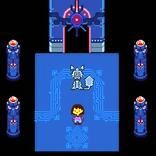
Huntsman
Huntsman is a stealth-based horror experience where players navigate a decaying estate while evading a shapeshifting entity that responds to movement, sound, and proximity. Unlike traditional jump-scare formats, the game uses tension, environmental clues, and narrative puzzles to immerse you in a world where silence is survival. As the Huntsman stalks you through shifting corridors, players must gather fragmented lore, solve spatial logic puzzles, and avoid detection using timing and shadows.
Survival Through Stealth and Awareness
The core mechanic of Huntsman revolves around indirect survival. There are no weapons, and no way to fight back. Your goal is to observe, memorize, and avoid. Every hallway and room in the mansion has hidden cues—some visual, some auditory—that hint at the entity’s presence. You’ll need to learn how the Huntsman moves, when it changes form, and how the layout can be used to your advantage.
- Sound-Based Tracking: The Huntsman reacts to footsteps, object interaction, and even prolonged breathing near certain locations.
- Line-of-Sight Mechanics: Staying hidden behind furniture or corners can save your life—but the entity can double back unexpectedly.
- Flash Events: Occasionally, the mansion shifts in real-time, locking off exits or changing room positions.
Puzzles Woven Into the Fear
While evasion is key, progress requires solving puzzles connected to the mansion’s fragmented timeline. Items must be collected in specific orders, and many objects behave differently depending on your location and the Huntsman’s phase. Certain locked doors require environmental triggers, while others demand a pattern of silence to open. Solving these challenges while being hunted adds pressure to even the smallest choice.
- Layered Inventory: You can only carry a few items, forcing decisions about what to keep and what to risk retrieving later.
- Timeline Clues: Notes, markings, and audio fragments tell the story in reverse—understanding the past helps you predict what’s coming.
- Room Logic: Some puzzles only activate when approached from specific routes or under specific light conditions.
Entity Variants and Shifting Rules
The Huntsman doesn’t always appear in the same form. It shifts behaviors based on your decisions, speed, and discovery progress. Early phases involve slow tracking and ambient stalking. As the game progresses, the entity becomes more aggressive, learning your habits and anticipating movement. In advanced sections, you’ll face mimicry—where the Huntsman impersonates found NPCs or distorts the space around you.
- Phase-Based Entity AI: The more you uncover, the more intelligent the Huntsman becomes.
- Mimic Events: Sometimes, the game tries to lure you by disguising the enemy as an ally or object.
- Space Distortion: Late-game areas shift as you walk, forcing real-time reorientation and escape recalculation.
A Horror Experience That Forces Caution
Huntsman is designed for players who prefer methodical tension over fast-paced chases. It doesn’t hold your hand, and it rarely repeats the same scare twice. It rewards memory, patience, and a willingness to learn the house’s logic. If you rush, you’ll fall into the Huntsman’s traps. But if you listen closely and plan carefully, you can piece together what happened—and maybe survive long enough to escape it.
Huntsman blends slow-burn terror with logic-based exploration, offering an experience where every step matters and every sound could be the one that gives you away.
































